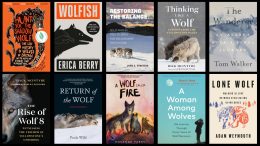Wolves are one of the defining wildlife species of the 21st century — if not every century — of human existence.
Relentlessly persecuted, uniquely inspirational, and endlessly adaptive, wolves embody our relationship with nature: We love it, we fear it; we worship it, we denigrate it; we depend on it; we destroy it.
It’s no wonder so many authors in recent years have turned to wolves to examine the biggest issues of the day. Their books, many of which we’ve previously reviewed, tackle humanity’s destructive urges, our challenges to correct our mistakes, and nature’s intrinsic quest to survive.
This is an important time to look at these big-picture issues and at wolves themselves. Existing wolf packs keep growing, rewilding efforts continue, and individual wolves constantly expand their territories.
At the same time people keep illegally killing wolves, their legal protections remain in constant flux, prey populations face numerous pressures, and the right-wing extremists behind the second Trump administration have their eyes on dismantling the laws and agencies that protect not just wolves but all endangered species and ecosystems.
With that in mind, we’ve collected 19 recent books about wolves and our tumultuous relationship to nature. Most are nonfiction, but we’ve included a few entertaining novels as well. You’ll also find photography collections, books for kids, and an academic text or two. As always, the link in each title goes the publishers’ sites, but you can also request these books from your local booksellers or libraries.

Wolfish: Wolf, Self, and the Stories We Tell About Fear by Erica Berry
“At the center of this lyrical inquiry is the legendary wolf, OR-7, who roams away from his familial pack in northeastern Oregon. While charting OR-7’s record-breaking journey out of the Wallowa Mountains, Erica Berry simultaneously details her own coming-of-age as she moves away from home and wrestles with inherited beliefs about fear, danger, femininity, and the body. As Erica chronicles her own migration — from crying wolf as a child on her grandfather’s sheep farm to accidentally eating mandrake in Sicily — she searches for new expressions for how to be a brave woman, human, and animal in our warming world. What do old stories about wolves tell us about society’s relationship with fear? By strategically unspooling the strands of our cultural constructs of predator and prey, and what it means to navigate a world in which we can be both, Erica bridges the gap between human fear and grief through the lens of a greatly misunderstood species.”
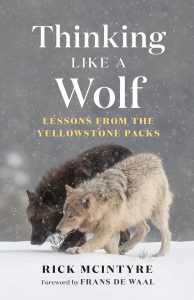
Thinking Like a Wolf: Lessons From the Yellowstone Packs by Rick McIntyre
“Award-winning author and renowned wolf researcher Rick McIntyre explores the intricate world of wolf behavior in Yellowstone National Park and highlights the individual character traits that allow wolf packs to thrive. Unveiling power struggles, pack politics, the roles of family protection, inter-pack conflicts, and more, Rick skillfully follows the intricacy of packs and the unique attributes each wolf has. In these true stories, he celebrates the lessons we can learn from wolf packs and the dynamic personalities that enable them to expand across new territories amidst adversity. Weaving an impressive web of politics and power, family cooperation and commitment, rivalry and resilience, Thinking Like a Wolf provides readers with a unique window into the fascinating inner workings of wolf packs.”
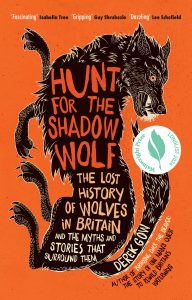
Hunt for the Shadow Wolf: The Lost History of Wolves in Britain and the Myths and Stories That Surround Them by Derek Gow
“Renowned rewilder Derek Gow has a dream: That one day we will see the return of the wolf to Britain as it has already returned elsewhere. As Derek worked to reintroduce the beaver, he began to hear stories of the wolf, both real and mythical, and his fascination grew. With increasing curiosity, Derek started to piece together fragments of information, stories and artefacts to reveal a shadowy creature that first walked proud through these lands and then was hunted to extinction as coexistence turned to fear, hatred — and domination. What Derek came to realize was that the underlying motives behind our hatred were far more prosaic and, like most persecutions, based in power and profit. We have turned the wolf into a savage beast and saw its extirpation as a necessity for our survival… Hunt for the Shadow Wolf is Derek’s quest to uncover the true nature of this creature because, as we seek to heal our landscape, we must reconcile our relationship with it.”
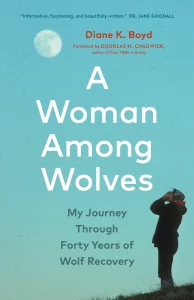
A Woman Among Wolves: My Journey Through Forty Years of Wolf Recovery by Diane K. Boyd
“A debut memoir from one of the first women biologists in the United States to study wild wolves in their natural habitat — a story of passion, resilience, and determination. Called the Jane Goodall of wolves, world-renowned wildlife biologist Diane Boyd has spent four decades studying and advocating for wolves in the wilds of Montana near Glacier National Park. When she started in the 1970s, she was the only female biologist in the United States researching and radio-collaring wild wolves… Boyd fearlessly forded icy rivers, strapped on skis to navigate thick stands of lodgepole pine, and monitored packs from the air in a tiny bush plane that skimmed the treetops so she could count wolves and see what they were feeding on. She faced down grizzly bears, mountain lions, wolverines — and the occasional trapper — as she stalked her quarry: a handful of wolves that were making their way south from Canada into Montana… Her writing resonates with her indomitable spirit as she explores the intricate balance of human and wolf coexistence.”
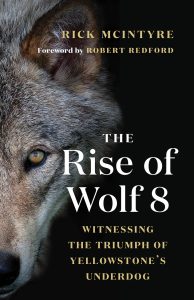
The Rise of Wolf 8: Witnessing the Triumph of Yellowstone’s Underdog by Rick McIntyre, Foreword by Robert Redford
“The astonishing true story of one of the first wolves to roam Yellowstone in more than 60 years. Yellowstone National Park was once home to an abundance of wild wolves—but park rangers killed the last of their kind in the 1920s. Decades later, the rangers brought them back, with the first wolves arriving from Canada in 1995. This is the incredible true story of one of those wolves. Wolf 8 struggles at first — he is smaller than the other pups, and often bullied — but soon he bonds with an alpha female whose mate was shot. An unusually young alpha male, barely a teenager in human years, Wolf 8 rises to the occasion, hunting skillfully, and even defending his family from the wolf who killed his father. But soon he faces a new opponent: his adopted son, who mates with a violent alpha female. Can Wolf 8 protect his valley without harming his protege?”
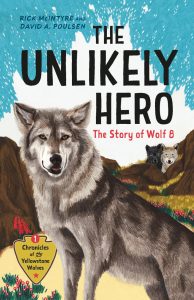
The Unlikely Hero: The Story of Wolf 8 by David A. Poulsen and Rick McIntyre (A Young Readers’ Edition)
“For readers of Pax and A Wolf Called Wander comes the action and adventure story of one of Yellowstone’s most famous animals, Wolf 8: a runt of the litter who surprised scientists by becoming a powerful leader. A true story… Wolf 8 is newly reintroduced along with his pack to Yellowstone National Park… He must learn to fend for himself in his new home, learn to hunt, compete for food, and even stand up to a grizzly bear 10 times his size. One day, Wolf 8 meets an alpha female raising a litter of pups on her own. Her mate was killed by humans. Can he rise to the occasion and help the young family survive? Is he ready to be an alpha wolf?”
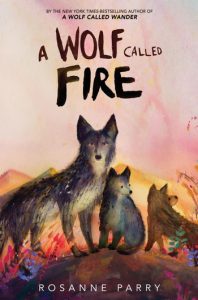
A Wolf Called Fire: A Voice of the Wilderness Novel by Rosanne Parry
“A Wolf Called Fire is a stand-alone companion novel to A Wolf Called Wander. It is inspired by Wolf 8, a real Yellowstone wolf who was the smallest of his pack and constantly bullied by his bigger brothers. Wolf 8 survived a tumultuous first year and grew up to be a different sort of leader—one who fought many rival wolves to submission but never killed any. He had a rare talent for mentoring young wolves and became the patriarch of the largest and most successful pack in Yellowstone by choosing a more collaborative and generous leadership style.” (Available Feb. 4, 2025)
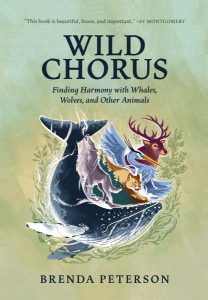
Wild Chorus: Finding Harmony With Whales, Wolves, and Other Animals by Brenda Peterson
“Peterson explores how wild animals can become our guides and fellow travelers, helping us navigate the stresses of daily life and a rapidly changing planet. From beluga whales to wolves, raccoons to bears, elk to herons, the stories in this collection offer insights into the intricacies of animals’ intuitive communication, compassionate attention, and peaceful adaptation. Featuring vivid, visionary stories, Wild Chorus reveals a world filled with inspiring lessons of kinship, connection, and living in the present. “
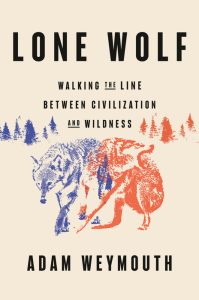
Lone Wolf: Walking the Line Between Civilization and Wildness by Adam Weymouth
“In 2011 a wolf named Slavc left his home territory of Slovenia for a wide-ranging journey across the Alps. Tracked by a GPS collar, he traveled over 1,200 miles, where he would mate with a female wolf on a walkabout of her own — the only two wolves for hundreds of square miles — and start the first pack to call the Italian Alps home in more than a century. A decade later and there are more than a hundred wolves in the area, the result of their remarkable meeting. Journalist Adam Weymouth follows Slavc’s path on foot, and in doing so, reports the fears and realities of those living on the land that is being repopulated by wolves. A metaphor for economic, political, and climate upheaval in a region that is seeing a centuries-old way of life being upended.” (Available June 3, 2025)
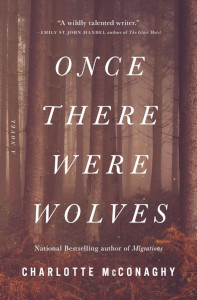
Once There Were Wolves by Charlotte McConaghy
In this award-winning novel, “Inti Flynn arrives in Scotland with her twin sister, Aggie, to lead a team of biologists tasked with reintroducing fourteen gray wolves into the remote Highlands. She hopes to heal not only the dying landscape, but Aggie, too, unmade by the terrible secrets that drove the sisters out of Alaska. Inti is also not the woman she once was, either, changed by the harm she’s witnessed — inflicted by humans on both the wild and each other. Yet as the wolves surprise everyone by thriving, Inti begins to let her guard down, even opening herself up to the possibility of love. But when a farmer is found dead, Inti knows where the town will lay blame. Unable to accept her wolves could be responsible; Inti makes a reckless decision to protect them. But if the wolves didn’t make the kill, then who did? And what will Inti do when the man she is falling for seems to be the prime suspect?”
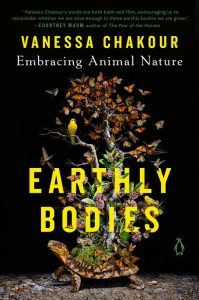
Earthly Bodies: Embracing Animal Nature by Vanessa Chakour
“Examining the cultural belief that our animal instincts are to be corrected or controlled, nature advocate and rewilding facilitator Vanessa Chakour explores our inner and outer landscapes through the lens of wild animals. How can wolves, misunderstood in myths but vital to ecosystems, teach us to rewrite dangerous stories and respect nature’s wisdom? How do the peaceful coexistence strategies of black bears offer insights into sharing resources? How can the engineering feats of beavers guide us in fostering regenerative building solutions and vibrant ecosystems? What can the loyal partnership of seahorses teach us about nurturing and love? Chakour draws parallels from struggles she has weathered in her own life to those endured by 23 wild animals — from wolves to sea lions — exploring our unease of feeling like prey; challenging the entrapment of our limiting beliefs; contextualizing the turmoil of fractured landscapes; and affirming our primal ache to belong.”
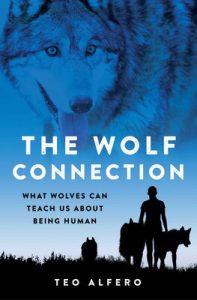
The Wolf Connection: What Wolves Can Teach Us About Being Human by Teo Alfero
“Teo Alfero, shamanic practitioner and wolf conservancy founder, shows how interacting with wolves and wolfdogs can benefit people from all walks of life. By restoring our ancestral bond with these resourceful beings, we can reclaim the best of what it means to be human. The Wolf Connection offers twelve Wolf Principles to awaken our intuition, live more authentically, and heal from trauma. The principles draw on knowledge that Teo and the Wolf Connection sanctuary team have gleaned firsthand through their Wolf Therapy® education and empowerment program, as well as the findings of wolf biologists and the wisdom of First Nation elders. Stories from myriad sources, including Wolf Heart Ranch provide a compelling understanding of the lessons wolves have to offer us.”
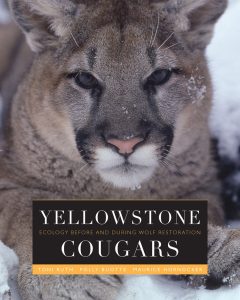
Yellowstone Cougars: Ecology Before and During Wolf Restoration by Toni K. Ruth, Polly C. Buotte, and Maurice G. Hornocker
“Yellowstone Cougars examines the effect of wolf restoration on the cougar population in Yellowstone National Park — one of the largest national parks in the American West. No other study has ever specifically addressed the theoretical and practical aspects of competition between large carnivores in North America. The authors provide a thorough analysis of cougar ecology, how they interact with and are influenced by wolves — their main competitor — and how this knowledge informs management and conservation of both species across the West.”
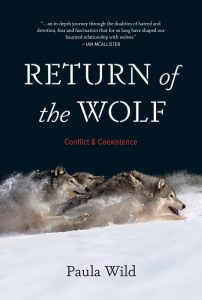
Return of the Wolf: Conflict and Coexistence by Paula Wild
“Wolves were once common throughout North America and Eurasia. But by the early twentieth century, bounties and organized hunts had drastically reduced their numbers. Today, the wolf is returning to its ancestral territories, and the “coywolf” — a smaller, bolder wolf-coyote hybrid — is becoming more common. Paula Wild gathers first-hand accounts of encounters with wolves and consults with wildlife experts for suggestions on how minimize conflict, respond to aggressive wolves and coexist with the apex predator… As a highly social, intelligent animal, the wolf is proving adept at navigating the challenges of an ever-changing landscape. But their fate remains uncertain. Wolves are adapting to humans; can humans adapt to wolves?”
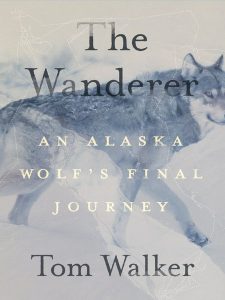
The Wanderer: An Alaska Wolf’s Final Journey by Tom Walker
“The Wanderer is the first book ever to chart a wolf’s movements for an extended period of time, almost to the day. Award-winning author Tom Walker draws on unparalleled access to a research study of wolves in Alaska to share the story of Wolf 258, nicknamed ‘The Wanderer.’ Relying on a GPS collar that recorded the animal’s coordinates each day, biologists tracked Wolf 258 as he moved through the wilderness, and, astonishingly, traveled more than 2,600 miles in less than six months. Through the lens of one wolf’s epic journey, Walker highlights connections to terrain, history, looming threats, and other animals… The Wanderer explores not only the natural history of wolves but the relationship of people — Indigenous, pioneers and settlers, biologists, politicians — with this predator, shedding light on the long-established northern traditions of trapping and hunting, the tangled politics of wolf management, and how artificial borders fail to contain this iconic species.”
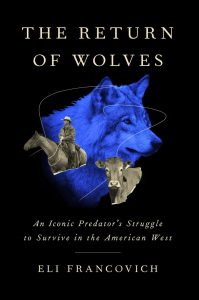
The Return of Wolves: An Iconic Predator’s Struggle to Survive in the American West by Eli Francovich
“The gray wolf has made an astonishing comeback in Washington. Nearly eradicated by the 1990s, conservationists and environmentalists have cheered its robust return to the state over the last two decades. But Washington ranchers are not so joyous. When wolves prey on livestock, ranchers view their livelihood as under attack… Journalist Eli Francovich investigates how we might mend this divide while keeping wolf populations thriving. He finds an answer in the time-honored tradition of range riding and one passionate range rider, Daniel Curry, who has jumped directly into the fray by patrolling the rural Washington landscape on horseback.”
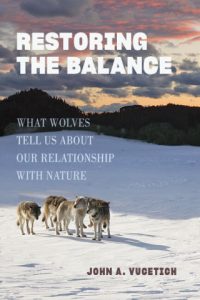
Restoring the Balance: What Wolves Tell Us About Our Relationship With Nature by John A. Vucetich
“For more than a quarter century, celebrated biologist John Vucetich has studied the wolves, and the moose that sustain them, of the boreal forest of Isle Royale National Park, an island in the northwest corner of Lake Superior. During this time, he has witnessed both the near extinction of the local wolf population, driven largely by climate change, and the intensely debated relocation of other wolves to the island to stabilize and maintain Isle Royale’s ecosystem health. In Restoring the Balance, Vucetich combines environmental philosophy with field notes chronicling his day-to-day experience as a scientist. Examining the fate of wolves in the wild, he shares lessons from these wolves and explains their impact on humanity’s fundamental responsibilities to the natural world.”
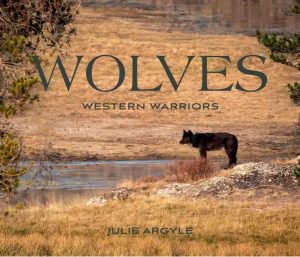
Wolves: Western Warriors by Julie Argyle
“In Wolves: Western Warriors, the life of the powerful and majestic North American wolf, often considered to be vermin and dangerous, is presented, showing the struggle they have to simply survive in the wild and in a world where many people don’t appreciate wolves and often set out to exterminate them. Argyle explores their behavior, their family dynamics, and what it means to be a wolf in the wilderness of the greater Yellowstone area through her stunning photography. She includes information about the reintroduction of wolves to Yellowstone and the ongoing struggle with keeping wolves listed as endangered species, while also offering her personal observations about the Wapiti Lake pack, among others, and several notable individual wolves.”
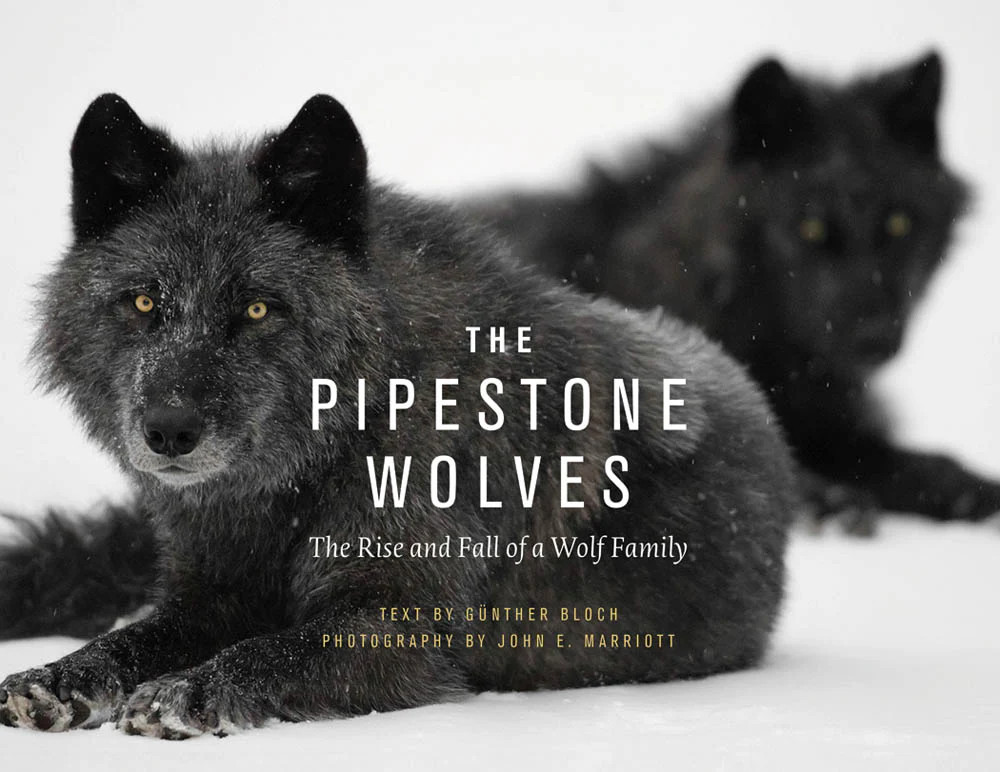
The Pipestone Wolves: The Rise and Fall of a Wolf Family by Günther Bloch (text) and John E. Marriott (photographs)
“In the winter of 2008–09, a new wolf family from the Pipestone Valley suddenly appeared in the Bow Valley of Banff National Park, taking up residence alongside a family that had ruled there for over a decade. Within a year, these new wolves had eliminated the Bow Valley wolves and established a dominance that would last for five years in the heart of Canada’s most famous national park. The book chronicles not only the rise of the Pipestones and how they established and maintained dominance in the valley, but also how an increase in mass tourism in Banff led to a decrease in prey density for the Pipestones, which in turn led to the wolves changing their hunting strategies and expanding their summer range… Have we passed the point of no return? And will our Banff wolves live forever after in a wildlife ghetto devoid of true wilderness characteristics?”
We’ll have several new environmental book reviews for you next month. Until then explore the “Revelator Reads” archive for hundreds of additional books — on wolves and a wide range of other environmental topics.

Previously in The Revelator:
The Ethics of Saving Wolves

